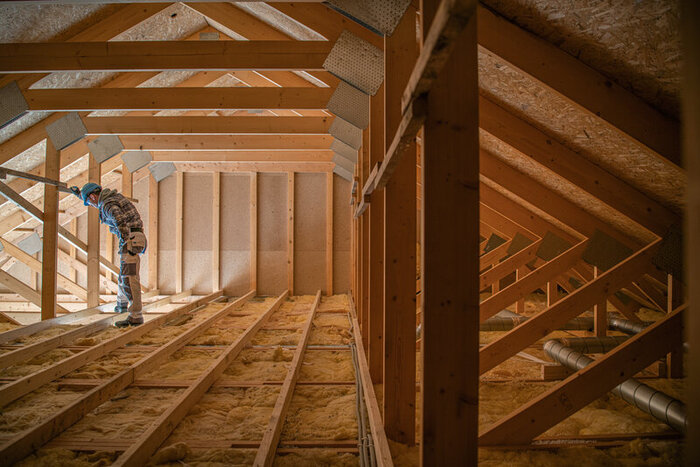
Is your attic more of an afterthought than a focus of your daily life? We get it. However, today we are asking you to shine the spotlight in your attic and see if it has these seven essential features. These attic updates and upgrades will benefit you this summer - and beyond.
Well-designed roof and attic systems are essential when it comes to whole-home energy efficiency and comfort. If your attic doesn’t have adequate insulation or ventilation, if it’s leaky or topped by a dilapidated roof, it can be felt in the home.
Your home may benefit from summertime attic improvements if:
Do any of those sound familiar?
If your home is 10 to 15 years old or more it’s time to have it inspected by a professional. If you live in a home that is 30 years or older, the inspection is even more important to make sure your insulation doesn’t have asbestos or other potential toxins.
If you know what to look for, you can do a basic inspection yourself. It’s important that your Bay Area home’s insulation has the right R-value (insulation power) for our geographic location.
Signs you may need to replace attic insulation are:
Read, Signs That it’s Time to Replace Your Insulation, for more information.
Roofs transmit solar heat gain from the sun through the roofing materials. This heat gets trapped in the attic, which is why attics are known for being hot and stuffy. Even with adequate insulation, elevated attic heat and humidity levels will affect the rest of the home unless they have a way to escape.
By ensuring there is adequate ventilation in the attic (installing features such as attic fans and rafter vents or making sure current fans/vents are working properly), you help to maintain lower attic temperatures, better whole-home humidity levels and decrease the risk of moisture-related problems - including mold and mildew growth.
Read energystar.gov’s page About Attic Ventilation for more on that topic.
Roof and attic systems go hand in hand. When a roof suffers, the attic suffers as well. For example:
Schedule roof inspections annually with a local, licensed roofing contractor. This is the best way to keep your roof in top form, which supports your attic.
If your roof is 20-years old or more, it might be time to replace it. If you need to replace your roof, consider using reflective roofing materials that will reduce the absorption of UV rays and solar heat gain. Replacing or repairing your roof provides the perfect opportunity to connect with a licensed Bay Area insulation contractor and make attic improvements at the same time.
If you have safe attic access, take a look around for any signs of old leaks or moisture issues. Examples include things like:
Your insulation contractor should speak to you about vapor barrier options that prevent moisture issues between the roof/attic and the rest of your home.
We’ve already talked about the connection between roof and attic systems. Air sealing is like the third musketeer on that team. The best roof and insulation systems in the world can’t do their job if leaky joints, penetrations, windows, etc., allow too much airflow. These air leaks directly interfere with the job your roof and attic insulation is trying to do. They allow hot air into the home and warm our out of the house during peak hot/cold seasons.
Air sealing is an integral part of whole-home energy efficiency and is one of the first things we recommend doing when you’re preparing the attic for insulation.
If your home is a little bit older, you may find evidence of current or historical pest infestation. Rodent droppings, nests, foul odors, or urine stains are some of the most obvious clues. If you notice that HVAC ductwork is separated or cracked, there may be pest debris in there as well (see more below). If you do see signs of rodent life, get the attic cleaned and rodent-proofed ASAP.
Pests can do significant damage to insulation because they love to use the fluffy contents of fiberglass insulation to make their nests. Rodents are also known for chewing their way through spray foam insulation. They are attracted to their own species’ scent so until the attic is completely cleaned, sanitized, and rodent-proofed, the attic space will be an attractive place for new rodents to take up residence.
Most HVAC systems include ductwork that is hidden in the attic and soffit spaces. If so, older ductwork in the attic should be inspected by your insulation contractor or your preferred HVAC vendor. Repairing, cleaning, and insulating ductwork saves energy, prevents pests and other debris from circulating through your home, and minimizes the amount of mold/mildew spores that can grow or spread through forced air systems.
Read our post, 7 Signs You Need Air Duct Repair, to establish whether your attic ductwork needs some help. Some of the most common include:
While ducts don’t need annual attention the same way the HVAC or roof do, they should be looked at every two years or so.
Need help completing any of these summer attic improvements? Contact Attic Solutions and we’ll get the job done before the start of air conditioning season.